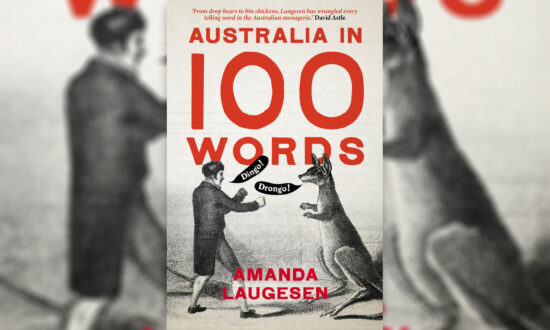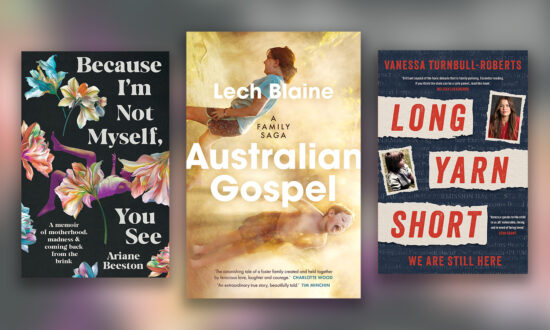“My motto has always been to run quickly and blindly towards the subjects that scare you,” writes Kris Kneen. They have asked their partner of 20 years to photograph them naked, for a Melbourne Writers Festival event about difficult bodies. “Fatness is the thing that I don’t talk about,” they continue. “Fatness is the thing that scares me most about myself.”
Fat Girl Dancing (Text Publishing), Kneen’s third memoir, explores their tortured relationship with their body – and their struggle to continue to exist in the world in it – in excoriatingly honest detail. In less accomplished hands, the darkness would overwhelm the book, and the reader. But the book, like Anthony Mullins’ exquisite photographs of Kneen’s naked curves, interspersed throughout Fat Girl Dancing, resists being seen one way. It invites interpretation. And it asks the reader to conceive a whole from its series of beautifully composed parts, bringing their own experiences and projections to bear on it.
“How does a person come to know that they are different from the children around them?” Kneen writes. “To measure themselves against a set normal and find themselves lacking?”
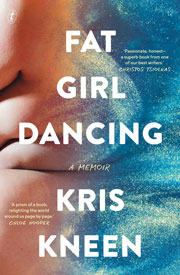 Kneen’s plumpness is the most visible aspect of what makes them different. But they also grow up in a family that’s different, as they explored in The Three Burials of Lotty Kneen, which detailed their childhood with their mother, aunt, sister and fiercely domineering Slovenian grandmother, in a fairytale papier-maché theme park. They don’t admit their queerness to themself until they’re 18, but it’s there. And they have recently come to realise they have never identified with a masculine or feminine identity.
Kneen’s plumpness is the most visible aspect of what makes them different. But they also grow up in a family that’s different, as they explored in The Three Burials of Lotty Kneen, which detailed their childhood with their mother, aunt, sister and fiercely domineering Slovenian grandmother, in a fairytale papier-maché theme park. They don’t admit their queerness to themself until they’re 18, but it’s there. And they have recently come to realise they have never identified with a masculine or feminine identity.
“I did not feel exactly like a woman but I didn’t feel like a man. Some weird ungendered person putting on the trappings and enjoying my body in the world.”
The central thread of this book is, as its title suggests, a struggle to come to terms with their body. Kneen recalls their teenage eating disorder, and later attempts to diet that ruined their metabolism. Dieting doesn’t work (and they have always exercised and eaten well). So Kneen’s trajectory is one of accepting themself as they are, rather than changing. That includes getting rightly angry at a world not designed to fit their body, and disposed to judge it.
“The problem is not me; it’s you,” they write. They also wrestle with deep-seated self-hatred: after all, they live in this world that judges. And they find ways to positively engage with and inhabit their own body. They paint a series of self-portraits. They try scuba diving (which doesn’t work out). And they embrace burlesque performance, which becomes a joyful pursuit.
“Being normal is the most elusive and holiest of grails,” Kneen writes (of adolescence). But being an artist – which is how Kneen inherently experiences the world; even cooking is a process of careful, loving creation – is not about being normal, which I associate with moving through the world without actively perceiving its detail. (The easier the world is to navigate, the less you need to be aware of its exact dimensions.) Being an artist is about looking, forcing yourself to see what’s actually there – and finding a way to communicate it.
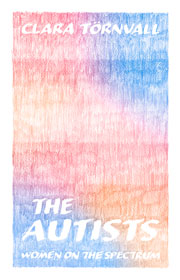 Clara Tornvall writes about how her “perceptive abilities are always in overdrive” in her new book, The Autists: Women on the Spectrum (Scribe), which explores the world of autistic women, combining memoir and research. Tornvall was diagnosed aged 42, after a lifetime of feeling different. She breaks down the autistic experience, drawing on interviews with other “autists” as well as her experience and reading.
Clara Tornvall writes about how her “perceptive abilities are always in overdrive” in her new book, The Autists: Women on the Spectrum (Scribe), which explores the world of autistic women, combining memoir and research. Tornvall was diagnosed aged 42, after a lifetime of feeling different. She breaks down the autistic experience, drawing on interviews with other “autists” as well as her experience and reading.
“I will never perceive the world habitually,” she writes: autistic people don’t use the brain’s automatic memory when carrying out practical tasks. “Instead, they engage a part of the brain that solves problems intellectually.” This means constantly taking in new details; building every task or observation from an accumulation of parts, rather than scanning a whole. Which is annoying when it means actively thinking about the steps of making a sandwich or brushing your teeth. But useful for an artist or writer.
Perhaps this is why Tornvall identifies so many women writers as probably autistic: Beatrix Potter, Virginia Woolf, Doris Lessing. As an autistic woman (who writes this column by revisiting books, looking at individual sentences I’ve marked as interesting, then assembling thoughts based on these details), it was one of the great pleasures of Tornvall’s book for me. I was also fascinated to read a Swedish autistic voice, writing from within a society structured very differently from ours, with a more active role for government – so many accounts available here are Australian, American or English.
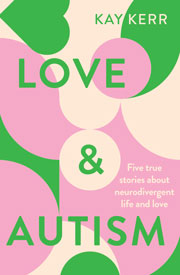 An Australian autistic-authored book I read and loved a few months ago was Love and Autism by Kay Kerr (Macmillan), who was diagnosed autistic in her 20s and has an autistic daughter. Kerr’s first two books were YA rom-coms with autistic protagonists; this one explores the nature of autistic love – and refutes myths that autistic people are bad at love and relationships, or are autistic due to a lack of early parental love or affection – by telling the stories of five very different autistic Australians. They include Michael, made famous by his appearance on the first series of Love on the Spectrum; Chloe, an engineer in a relationship with fellow autistic Jacob; and Tim, who is non-speaking and types on a speech-generating device.
An Australian autistic-authored book I read and loved a few months ago was Love and Autism by Kay Kerr (Macmillan), who was diagnosed autistic in her 20s and has an autistic daughter. Kerr’s first two books were YA rom-coms with autistic protagonists; this one explores the nature of autistic love – and refutes myths that autistic people are bad at love and relationships, or are autistic due to a lack of early parental love or affection – by telling the stories of five very different autistic Australians. They include Michael, made famous by his appearance on the first series of Love on the Spectrum; Chloe, an engineer in a relationship with fellow autistic Jacob; and Tim, who is non-speaking and types on a speech-generating device.
Kerr writes autism from the inside: with empathy, understanding and a deceptive ease for unpacking how and why autistic people think the way they do – in a way that speaks to autistic and non-autistic readers alike. For example, she explains why autistic people are great fans; Chloe “commits in the way autistic people are so good at doing” to her Short Stack online fandom as a teenager, and one of the most cherished moments in Michael’s life is when he meets Gilligan Island’s Dawn Wells at a fan convention and she tells him he makes a good Skipper.
And Kerr uses her knowledge to question existing wisdom, such as when she finds research focusing on whether screen time causes autism (“insert eye roll”), knowing it’s how many autistic people recharge. I highly recommend this book, for readers who want to understand autism better, or would welcome the recognition they’d find in its pages.
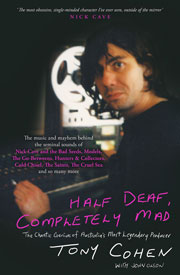 “If I love something I go apeshit over it,” wrote legendary Australian sound engineer and producer Tony Cohen, in his posthumously published memoir, Half Deaf, Completely Mad (written with John Olson, Black Inc), recalling a chaotic, intensely lived life helping create the sound for bands like Nick Cave and the Bad Seeds, The Go-Betweens, Cold Chisel and more.
“If I love something I go apeshit over it,” wrote legendary Australian sound engineer and producer Tony Cohen, in his posthumously published memoir, Half Deaf, Completely Mad (written with John Olson, Black Inc), recalling a chaotic, intensely lived life helping create the sound for bands like Nick Cave and the Bad Seeds, The Go-Betweens, Cold Chisel and more.
After Cohen was kicked out of school aged 15, his dad helped him get a job as “studio odd-job boy” at Armstrong Studios, “a huge part of Australian music history and responsible for some of the greatest recordings ever”. There, after two weeks’ work experience, he learned sound engineering on the job – including from Molly Meldrum when he was 18.
Cohen calls Molly a genius who taught him to “exaggerate” sound; he also shares stories that are less genius and more chaotic. “Molly had a habit of hearing a song at a drunken party, leaping up and declaring it a hit. Had he listened to it sober in the office it would have been a different story.”
Other entertaining stories include sharing a studio with a Young Talent Time producer, who he’d have run-ins with after all-night recording sessions with “the punks”. Once he “chased a frightened Tina Arena out of the building” while Nick Cave rolled on the floor laughing.
Cohen wasn’t much interested in punk at first, but “the drugs and ratbagginess of it all was fantastic”. His longest-running, most creatively significant partnership would be with Nick Cave and Mick Harvey, who he worked with as The Boys Next Door, The Birthday Party and The Bad Seeds. “No one starts out producing records and in the early days it was a combined effort with the band,” he reflects of his career trajectory. “After a while people start to think you know what you’re talking about, then all of a sudden you’re a producer.”
The Reels “thought it was a joke to hire the punk rock dude to record beautiful sounds”. A PA he’d borrowed from his drug dealer was taken away by “a bunch of heavies” while he was recording with a “frightened” Go-Betweens. Don Walker wanted The Birthday Party sound on Cold Chisel’s Twentieth Century album, but “Jimmy Barnes didn’t feel the same way”. Cohen’s cameos were cut from Dogs in Space and Mad Max: Beyond Thunderdome. French feminists went after Nick Cave with broken bottles after a Paris gig. (“What a fierce lot!”)
Warm, self-deprecating and both earthy and assured, Half Deaf, Completely Mad is the story of someone who was very, very good at what he did – and plunged his whole being into it. It’s also a cracking read, with the rackety, ragged, richly textured quality of the punk and rock sounds Tony Cohen produced.
“The music has always come from the artists,” wrote Cohen.
 In Deborah Levy’s new novel, August Blue (Hamish Hamilton), set in pandemic Europe, narrator Elsa recalls her piano teacher telling her “the piano was not the instrument, I was the instrument”. She was a six-year-old prodigy, and an orphan. The teacher – both the only father she has known, and not quite a father – adopted her and changed her name (from Ann), to mould her into the genius he saw in her. “We had an entirely professional relationship. But I had been six years old.”
In Deborah Levy’s new novel, August Blue (Hamish Hamilton), set in pandemic Europe, narrator Elsa recalls her piano teacher telling her “the piano was not the instrument, I was the instrument”. She was a six-year-old prodigy, and an orphan. The teacher – both the only father she has known, and not quite a father – adopted her and changed her name (from Ann), to mould her into the genius he saw in her. “We had an entirely professional relationship. But I had been six years old.”
When the novel opens, Elsa is in transition, aged 33. She is taking a break from performing for the first time – disgraced after losing her way for two minutes on stage in Vienna. She drifts through Europe, teaching wealthy children who are seen by their parents for the ambitions they project on them rather than who they essentially are; her expensive lessons do little for them, but her act of looking at their denied selves is received as a gift. The novel is studded with mirrors and doubles; these children may reflect her own childhood, despite her arms-length gratitude for it.
The novel opens with its starkest double: a woman who looks like Elsa, wearing her same raincoat, who buys a pair of mechanical dancing horses Elsa spontaneously covets. Is she real, or a projection? We increasingly wonder, as Elsa sees the woman again in Paris and then London, fixating on her – and the seemingly ordinary horses. She begins to hear her own thoughts voiced by the woman, who she decides is her double. “I heard her voice as music, a mood, or sometimes as a combination of two chords. She frightened me. She was more knowing than I was. She made me feel less alone.”
Everything in this novel represents something else; almost nothing is as it seems – or, not only that. It has a dreamlike quality, though it’s also rich with sensuous detail (like Levy’s exquisite “living autobiography” trilogy), anchoring it in the real world. Tomatillo seedlings “smelled of midnight and hot stones in the rain”. Other details whisper volumes: Elsa’s childhood home with her father-teacher had “a kilim rug with [a] scorpion woven into its centre”.

Get InReview in your inbox – free each Saturday. Local arts and culture – covered.
Thanks for signing up to the InReview newsletter.
Elsa is obsessed with Isadora Duncan, the mother of modern dance; she shows a student YouTube videos of Duncan performing to encourage him to tap the flow of his inner self. “Isadora was certain that if she could tell you all about what it meant, there would be no point in dancing it.” I finished August Blue last night. I’m still in its thrall, swimming in imagery and feeling.
What I’m feeling is the ache of being estranged from the self, and the spidery sense of feeling your way back towards what it might be. A longing for something you never quite had. The consolation prize of talent; the deeper consolation – and discovery – of making art. And perhaps most of all, the sharp-edged potency of looking at life and truly seeing it.
Jo Case is a monthly columnist for InReview and deputy editor, books & ideas, at The Conversation. She is an occasional bookseller at Imprints on Hindley Street and former associate publisher of Wakefield Press.
Support local arts journalism
Your support will help us continue the important work of InReview in publishing free professional journalism that celebrates, interrogates and amplifies arts and culture in South Australia.
Donate Here

